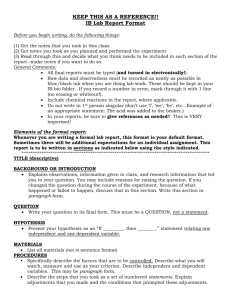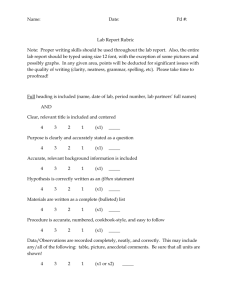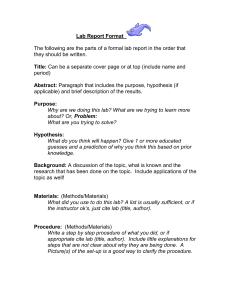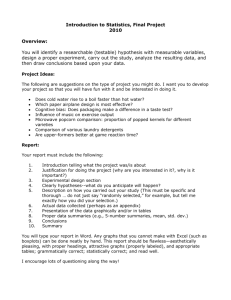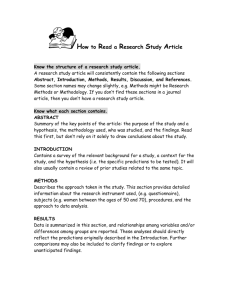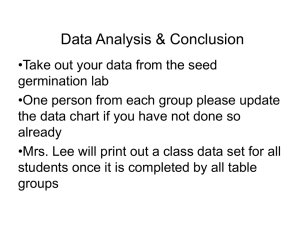format... for typical lab
advertisement
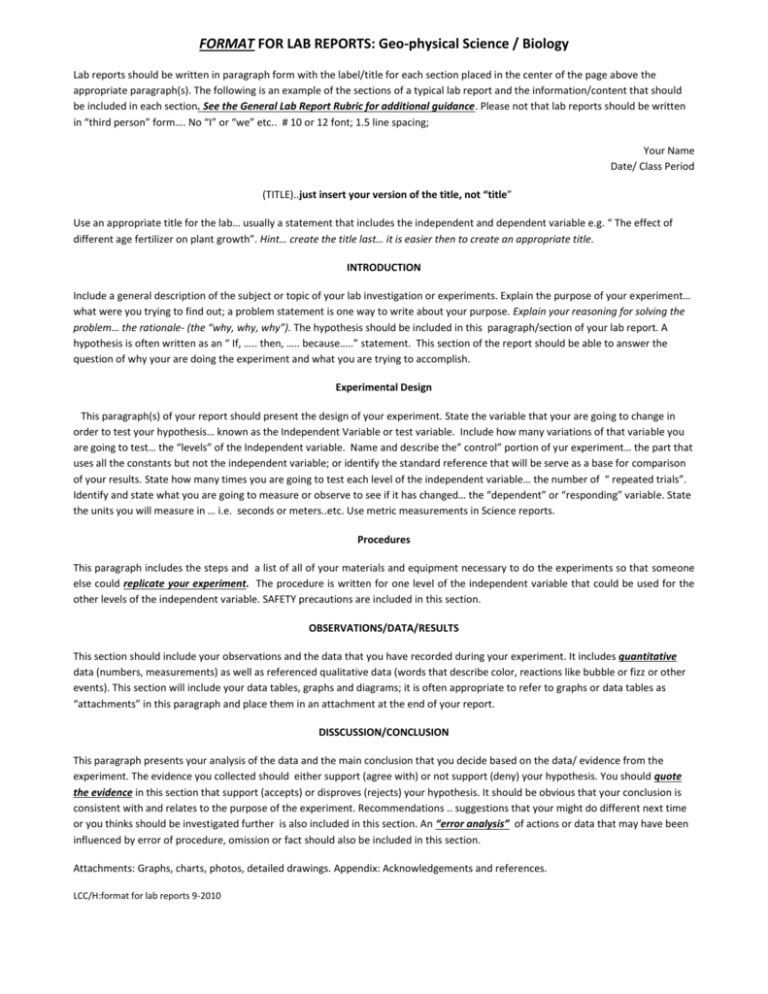
FORMAT FOR LAB REPORTS: Geo-physical Science / Biology Lab reports should be written in paragraph form with the label/title for each section placed in the center of the page above the appropriate paragraph(s). The following is an example of the sections of a typical lab report and the information/content that should be included in each section. See the General Lab Report Rubric for additional guidance. Please not that lab reports should be written in “third person” form…. No “I” or “we” etc.. # 10 or 12 font; 1.5 line spacing; Your Name Date/ Class Period (TITLE)..just insert your version of the title, not “title” Use an appropriate title for the lab… usually a statement that includes the independent and dependent variable e.g. “ The effect of different age fertilizer on plant growth”. Hint… create the title last… it is easier then to create an appropriate title. INTRODUCTION Include a general description of the subject or topic of your lab investigation or experiments. Explain the purpose of your experiment… what were you trying to find out; a problem statement is one way to write about your purpose. Explain your reasoning for solving the problem… the rationale- (the “why, why, why”). The hypothesis should be included in this paragraph/section of your lab report. A hypothesis is often written as an “ If, ….. then, ….. because…..” statement. This section of the report should be able to answer the question of why your are doing the experiment and what you are trying to accomplish. Experimental Design This paragraph(s) of your report should present the design of your experiment. State the variable that your are going to change in order to test your hypothesis… known as the Independent Variable or test variable. Include how many variations of that variable you are going to test… the “levels” of the Independent variable. Name and describe the” control” portion of yur experiment… the part that uses all the constants but not the independent variable; or identify the standard reference that will be serve as a base for comparison of your results. State how many times you are going to test each level of the independent variable… the number of “ repeated trials”. Identify and state what you are going to measure or observe to see if it has changed… the “dependent” or “responding” variable. State the units you will measure in … i.e. seconds or meters..etc. Use metric measurements in Science reports. Procedures This paragraph includes the steps and a list of all of your materials and equipment necessary to do the experiments so that someone else could replicate your experiment. The procedure is written for one level of the independent variable that could be used for the other levels of the independent variable. SAFETY precautions are included in this section. OBSERVATIONS/DATA/RESULTS This section should include your observations and the data that you have recorded during your experiment. It includes quantitative data (numbers, measurements) as well as referenced qualitative data (words that describe color, reactions like bubble or fizz or other events). This section will include your data tables, graphs and diagrams; it is often appropriate to refer to graphs or data tables as “attachments” in this paragraph and place them in an attachment at the end of your report. DISSCUSSION/CONCLUSION This paragraph presents your analysis of the data and the main conclusion that you decide based on the data/ evidence from the experiment. The evidence you collected should either support (agree with) or not support (deny) your hypothesis. You should quote the evidence in this section that support (accepts) or disproves (rejects) your hypothesis. It should be obvious that your conclusion is consistent with and relates to the purpose of the experiment. Recommendations .. suggestions that your might do different next time or you thinks should be investigated further is also included in this section. An “error analysis” of actions or data that may have been influenced by error of procedure, omission or fact should also be included in this section. Attachments: Graphs, charts, photos, detailed drawings. Appendix: Acknowledgements and references. LCC/H:format for lab reports 9-2010
